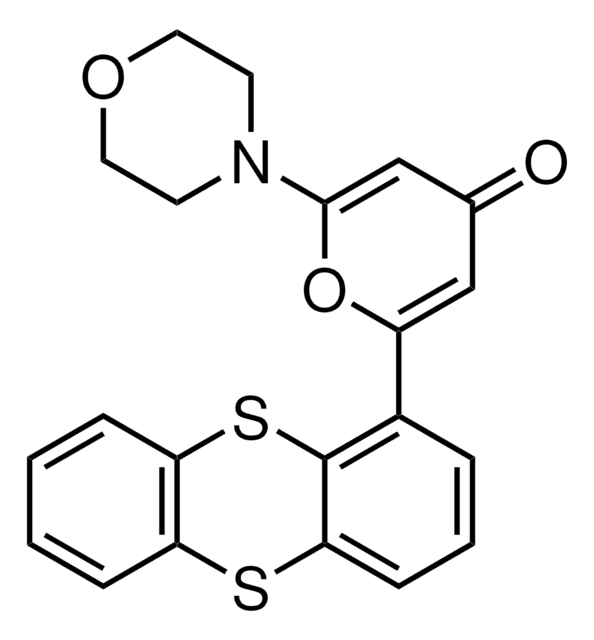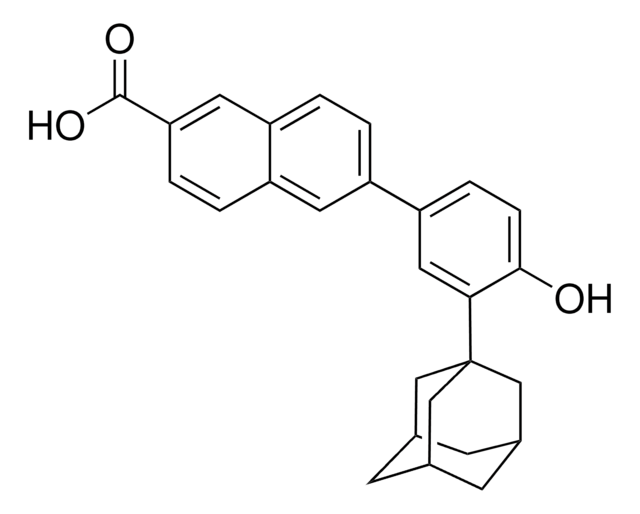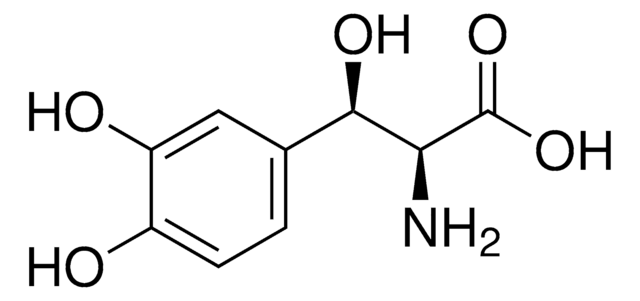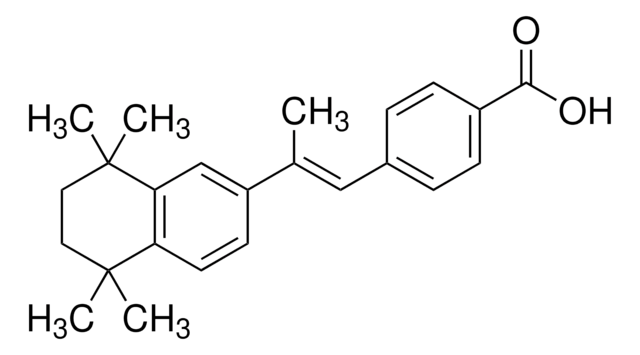Key Documents
SML0282
Bexarotene
≥98% (HPLC)
Synonim(y):
4-[1-(5,6,7,8-Tetrahydro-3,5,5,8,8-pentamethyl-2-naphthalenyl)ethenyl]benzoic acid, LGD-1069, SR-11247
About This Item
Polecane produkty
Próba
≥98% (HPLC)
Postać
powder
kolor
white to beige
rozpuszczalność
DMSO: ≥15 mg/mL (warmed)
temp. przechowywania
−20°C
ciąg SMILES
C=C(C1=CC=C(C(O)=O)C=C1)C2=C(C)C=C3C(C(C)(C)CCC3(C)C)=C2
InChI
1S/C24H28O2/c1-15-13-20-21(24(5,6)12-11-23(20,3)4)14-19(15)16(2)17-7-9-18(10-8-17)22(25)26/h7-10,13-14H,2,11-12H2,1,3-6H3,(H,25,26)
Klucz InChI
NAVMQTYZDKMPEU-UHFFFAOYSA-N
informacje o genach
human ... RXRA(6256) , RXRB(6257) , RXRG(6258)
Zastosowanie
- to study its effect on human oral squamous cell carcinoma (OSCC) cell lines
- to test for cooperative cell killing of cutaneous T cell lymphoma (CTCL) with 966
- as a standard in HPLC for determining its potential impurities in drug substances and drug products
- to investigate its effects on the changes in renal, cardiac, hepatic, and pulmonary expression/activity of inducible nitric oxide synthase (iNOS) and CYP4F6
- to analyze the involvement of retinoid x receptor (RXR) homo or permissive heterodimers
- to study its potential impurities in drug substances and drug products
Działania biochem./fizjol.
Cechy i korzyści
Kod klasy składowania
11 - Combustible Solids
Klasa zagrożenia wodnego (WGK)
WGK 3
Temperatura zapłonu (°F)
Not applicable
Temperatura zapłonu (°C)
Not applicable
Certyfikaty analizy (CoA)
Poszukaj Certyfikaty analizy (CoA), wpisując numer partii/serii produktów. Numery serii i partii można znaleźć na etykiecie produktu po słowach „seria” lub „partia”.
Masz już ten produkt?
Dokumenty związane z niedawno zakupionymi produktami zostały zamieszczone w Bibliotece dokumentów.
Klienci oglądali również te produkty
Nasz zespół naukowców ma doświadczenie we wszystkich obszarach badań, w tym w naukach przyrodniczych, materiałoznawstwie, syntezie chemicznej, chromatografii, analityce i wielu innych dziedzinach.
Skontaktuj się z zespołem ds. pomocy technicznej

















